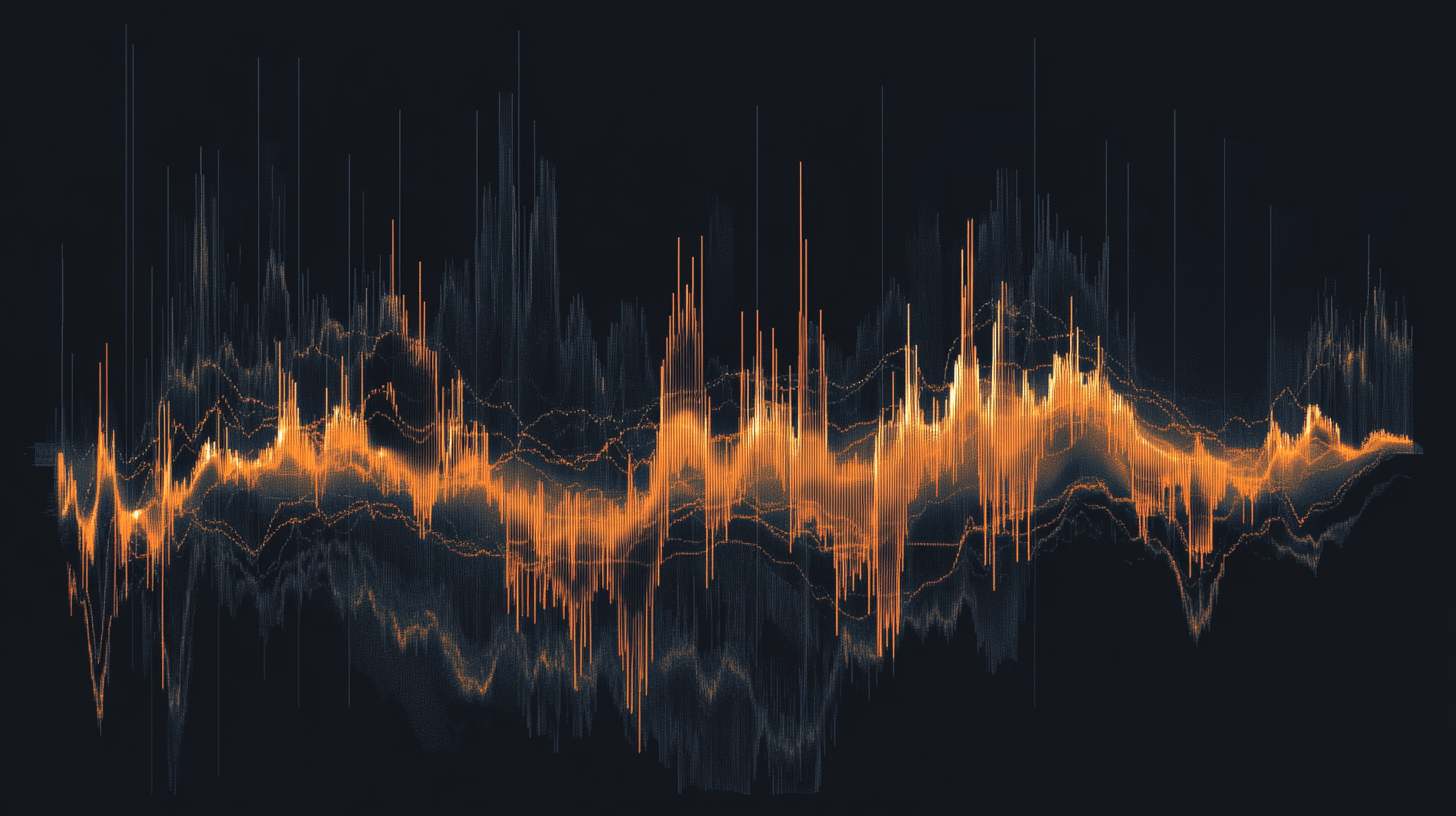Cryptocurrency volatility refers to how much and quickly a coin’s price moves over time. When prices swing up and down often or by large amounts, we call that high volatility. If prices stay mostly steady, volatility is low.
Volatility indicates how unpredictable the price performance of a crypto asset is. However, all crypto moves more sharply than traditional stocks because markets are smaller, news hits harder, and speculation runs high. It’s why Bitcoin might gain $5,000 in a day, then lose it overnight.
For investors, volatility cuts both ways. You could profit from quick surges, but sudden drops hurt just as fast. Traders use it to time buys or sells, while long-term holders brace for the bumps. In this article, we will discuss volatility, how it affects the broader crypto market, and whether it’s possible to stay on top of it as an investor.
Key Takeaways
- Crypto volatility measures how much and how quickly the price of a cryptocurrency changes over time, often compared to more stable assets like fiat currencies or stocks.
- Crypto markets are highly reactive to news, investor sentiment, regulations, and market cycles, often resulting in double-digit percentage changes in a single day.
- Many tokens trade on thin order books and are driven by hype, making them more sensitive to large buy or sell orders.
What Is Volatility?
Volatility is a measure that shows how much risk you’re taking with your investment. A coin that jumps 20% in 24 hours and drops the next day is more volatile than one that moves slowly and steadily. Traders use volatility to decide how much to risk and what strategies to use.
There are two main types of volatility you’ll see in crypto:
| Feature | Historical Volatility | Implied Volatility |
| What it measures | Past price changes | Market’s guess about future price changes |
| Where it comes from | Daily price data | Option prices (via models like Black-Scholes) |
| What it’s used for | Risk analysis, backtesting strategies | Option pricing, gauging sentiment |
| Viewpoint | Looks backward | Looks forward |
Historical volatility shows how much a coin’s price has changed over a past period, like the last 30 or 90 days. It uses real market data and gives a solid view of how stable or unstable a coin has been.
Implied volatility, on the other hand, shows what traders expect prices to do next. It comes from options pricing. When implied volatility is high, the market expects big price moves. When it’s low, traders expect the market to stay calm.
If you’re analysing crypto risk, looking at both types together can help you plan better and make smarter trading calls.
Causes of High Volatility in Crypto Markets
Cryptocurrency markets are known for their significant price fluctuations, and there are several factors that contribute to this high volatility.
Market News and Events
Cryptocurrency prices are susceptible to news and events. Regulatory announcements like new legislation or enforcement actions can lead to quick price changes. For instance, discussions around the U.S. Senate’s advancement of legislation to regulate stablecoins have influenced market dynamics.
Similarly, security breaches or hacks of major exchanges can harm investor confidence, leading to sell-offs. The approval or rejection of cryptocurrency ETFs also plays a role; positive news can drive prices up, while negative news can cause declines.
Liquidity and Market Depth
Liquidity refers to the ease with which assets can be bought or sold without affecting their price. In cryptocurrency markets, especially for lesser-known tokens, liquidity can be limited. This lack of depth means large transactions can significantly impact prices, increasing volatility.
Speculation and Hype
Speculative trading is prevalent in the crypto space. Social media platforms and influencers can amplify hype around specific tokens, leading to rapid price increases. However, these surges are often followed by sharp declines when the excitement fades, or negative information emerges. This cycle of hype and correction contributes to the market’s overall volatility.
Whale Movements
“Whales” are individuals or entities holding large amounts of cryptocurrency. When these holders make significant trades, they can influence market prices due to the size of their transactions. For example, a large sell order can flood the market with supply, driving prices down. Conversely, substantial purchases can create buying pressure, pushing prices up. The actions of whales can thus lead to sudden and significant price movements.
Lack of Regulation and Market Maturity
The cryptocurrency market is relatively young and lacks the framework that regulates traditional financial markets. This absence of oversight can lead to increased uncertainty and risk, contributing to price volatility. Additionally, the market’s beginner stage means it is still developing mechanisms to handle large-scale trading and protect investors, which can increase price swings during periods of high activity or stress.
Latest Trading News
How is Volatility in Crypto Measured?
Crypto volatility is measured using tools that track how prices will swing. Traders rely on three main methods: standard deviation for past price trends, Average True Range (ATR) for daily movements, and volatility indexes like BitVol to predict future tendencies.
Standard Deviation
The standard deviation shows how much crypto prices stray from their average over time. Let’s say Bitcoin’s price averages $90,000 in a month but bounces between $85,000 and $95,000 daily. A high standard deviation here shows big swings, which means high volatility. Traders use this math to try to measure risk.
Average True Range (ATR)
ATR measures how much a crypto’s price typically moves daily, including gaps between trades. It looks at the biggest daily swing. Whether from today’s high to low, yesterday’s close to today’s high, or yesterday’s close to today’s low. For example, if Ethereum’s ATR is $200, expect daily moves around that size. Traders use ATR to set stop-loss orders: a high ATR means setting wider stops to avoid getting knocked out by normal volatility.
Volatility Indexes
Indexes like BitVol (Bitcoin Volatility Index) and DVOL (Deribit Volatility Index) track options prices, or the cost of betting on price swings. If BitVol jumps, traders expect Bitcoin’s price to go wild soon. These indexes help you spot market fear or greed, much like the stock market’s VIX.
| Measure | Description | Purpose | Use Case |
| Standard Deviation | Statistical measure of price return spread | Quantifies historical volatility | Risk assessment, strategy development |
| Average True Range (ATR) | Average daily price range including gaps | Measures recent price movement range | Setting stops, identifying volatility shifts |
| Volatility Indexes (CVIX) | Implied volatility from crypto options | Forecasts expected future volatility | Market sentiment, options pricing |
How Does Volatility Affect Investors?
For investors, crypto volatility can open doors to profits while complicating risk management, shaping long-term plans in the process.
Opportunities for Profit
During volatile periods, sharp price swings let you buy low and sell high quickly. Day traders take advantage of these moves, hopping in and out of positions to catch short-term gains. Arbitrage traders exploit price differences between exchanges, like buying Bitcoin cheaper on Platform A and selling it higher on Platform B. Even leveraged trading (borrowing funds to amplify bets) becomes tempting during wild swings. But remember: higher rewards mean higher risks.
Risk Management Challenges
Volatility can wipe out gains faster than you earn them. Prices might plummet overnight, and stop-loss orders sometimes trigger too late during flash crashes. Emotional decisions creep in, so panic selling during dips or FOMO buying at peaks are common among investors.
Herd mentality worsens this; when everyone rushes for exits, prices spiral. Diversification helps, but one tweet can erase value if most of your portfolio is in meme coins. Timing the market is extremely difficult, even for seasoned traders, and many experts have been burned trying to “catch the bottom.”
Impact on Long-Term Investment Strategies
For HODLers, cryptocurrency investors who adopt a long-term holding strategy, volatility is a patience game. Dollar-cost averaging (DCA) smooths the ride: investing $100 weekly in Bitcoin, for example, buys more coins when prices dip and fewer when they rise.
Mixing stablecoins, blue-chip cryptos, and altcoins balances risk. Over time, major coins like Ethereum see less volatility as markets mature, but newcomers have drastic price changes. Your strategy depends on risk tolerance, so if sleepless nights aren’t your thing, avoid all-in bets on volatile assets.
How to Navigate Crypto Volatility
Crypto prices can change quickly and without warning, leaving investors scrambling to react. However, strategies like diversification, stop-loss orders, and dollar-cost averaging (DCA) can help you manage risk and make more measured decisions.
Diversification
Spread your investments across different coins and sectors. For example, mix Bitcoin for stability, Ethereum for smart contracts, a stablecoin like USDC to park cash, crypto presales to get in on the floor of a successful coin early, and maybe a DeFi token or two. If one asset crashes, others might balance the loss.
Stop-Loss and Take-Profit Orders
Set these automated tools to protect your money. A stop-loss order sells your crypto if prices drop below your chosen level, while a take-profit order locks in gains when prices hit your target. Trailing stops adjust as prices rise, letting you ride upward trends while guarding against sudden drops.
Dollar-Cost Averaging (DCA)
Dollar Cost Averaging or DCA means investing fixed amounts regularly, like $50 weekly, no matter the price. It smooths out volatility’s bumps. If Bitcoin is $30,000 one week and $25,000 the next, you buy more when it’s cheap and less when it’s pricey. Over time, this averages your cost and reduces the stress of timing the market. It’s the slow-and-steady path for long-term holders.
Conclusion
Crypto volatility means prices swing quickly, sometimes offering profit chances, sometimes posing risks. These shifts happen because markets react fast to news, regulations, or shifts in investor sentiment. Staying informed helps you spot trends early, whether a tech upgrade or policy change. Think of it like checking the weather before a hike: knowing the forecast won’t stop the storm but helps you pack the right gear.
To navigate this, stick to a strategy. Decide in advance when to buy, sell, or hold, and follow those rules even when prices jump or drop suddenly. Emotional decisions, like panic selling during a dip, often backfire. Track market updates, but don’t let every headline steer you off course. Volatility isn’t your enemy if you prepare for it. Stay sharp, stay patient, and let your strategy do the heavy lifting.
Frequently Asked Questions (FAQ)
What is volatility in crypto?
Why is cryptocurrency more volatile than traditional assets?
Can high volatility be good for traders?
What tools can investors use to manage crypto volatility?
How do stablecoins help manage volatility in the crypto market?
How can I protect my investments from extreme volatility?
Does higher volatility mean higher returns?
References
- Smart Investor: Volatility, what is it and why it is important (Saxo Bank)
- Demystifying Cryptocurrency Volatility And Its Impact (Grip Invest)
- Key Factors That Influence Crypto Volatility: What Drives It? (SecuX)
- Senate advances legislation to regulate stablecoins, a form of cryptocurrency (AP News)
- Tips for managing risk in crypto investments (Fidelity)
- Bitcoin Price Suddenly Soars As Congress Predicted To ‘Make History’ (Forbes)
- Market outlook 2025: Navigating cross-currents (J.P Morgan)
- Spring 2025 Economic Forecast: Moderate growth amid global economic uncertainty (European Comission)

